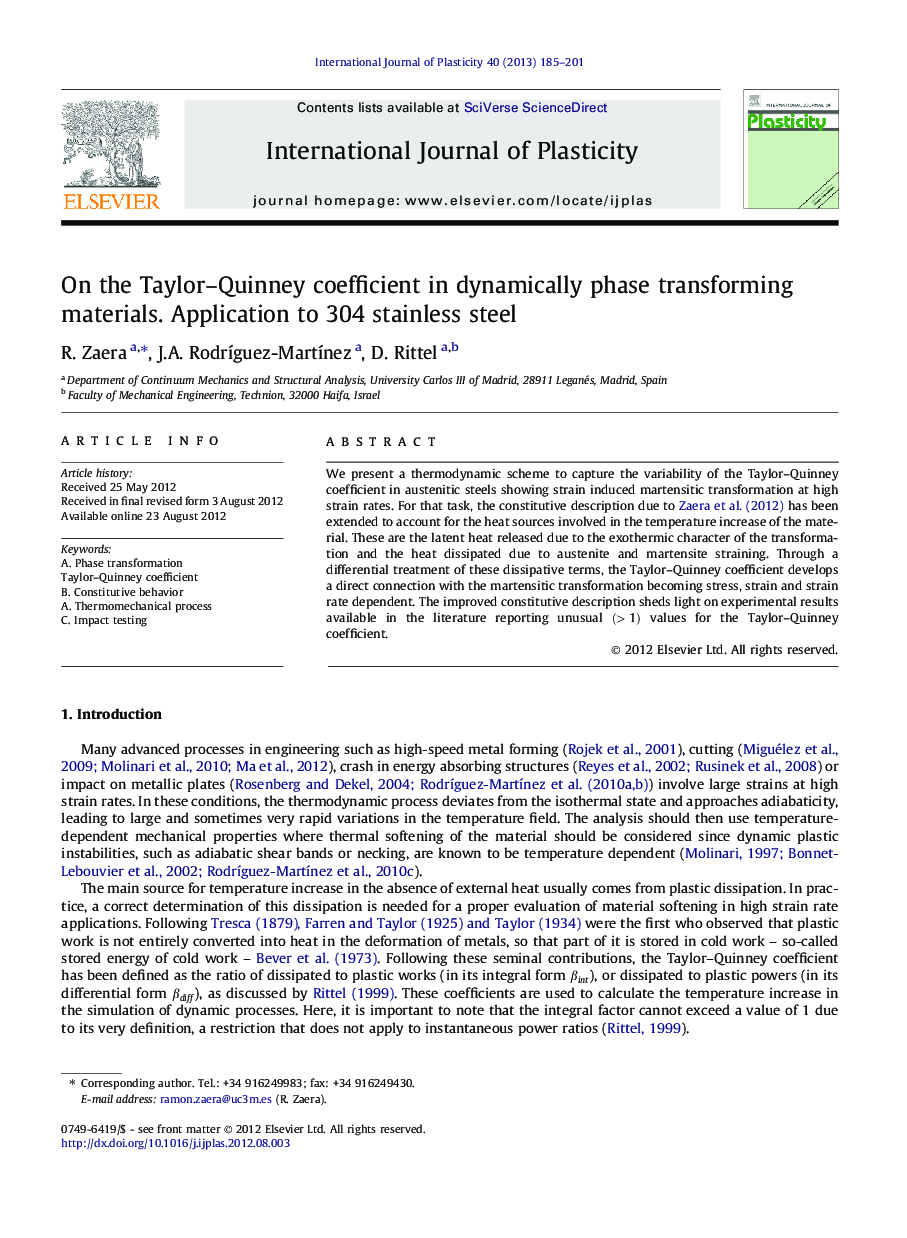| Article ID | Journal | Published Year | Pages | File Type |
|---|---|---|---|---|
| 786962 | International Journal of Plasticity | 2013 | 17 Pages |
We present a thermodynamic scheme to capture the variability of the Taylor–Quinney coefficient in austenitic steels showing strain induced martensitic transformation at high strain rates. For that task, the constitutive description due to Zaera et al. (2012) has been extended to account for the heat sources involved in the temperature increase of the material. These are the latent heat released due to the exothermic character of the transformation and the heat dissipated due to austenite and martensite straining. Through a differential treatment of these dissipative terms, the Taylor–Quinney coefficient develops a direct connection with the martensitic transformation becoming stress, strain and strain rate dependent. The improved constitutive description sheds light on experimental results available in the literature reporting unusual (>1)(>1) values for the Taylor–Quinney coefficient.
► Theoretical prediction of the evolution of the Taylor–Quinney coefficient in steels showing SIMT. ► Key experimental results on the variations of the Taylor–Quinney coefficient are rationalized. ► The Taylor–Quinney coefficient becomes stress, strain and strain rate dependent. ► The results highlight the lack of homogeneity of the Taylor–Quinney coefficient along the solid.
